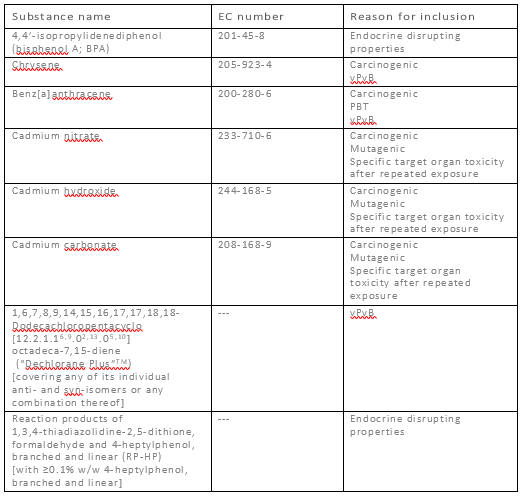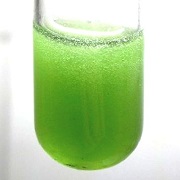We use cookies to personalize content and advertisements, to offer social media functions and to analyze access to our website.
You can revoke the given consent at any time. You can find further information in our Privacy Policy.
Mar 2018
 upcoming registration deadline on May 31, 2018, companies that fail to register their substances under REACH are left with few options. In accordance with the principle “no data, no market” (Art. 5 REACH Regulation), it is recommended to register substances on time, when possible. Pre-registrations with compliant dossiers will become invalid and SIEFs inactive after the submission deadline (May 31st). Registrations submitted after June 1st will undergo more complex inquiry procedures.
It is important to note that selling stocks of unregistered substances produced in, or imported into the EU/EEA before the deadline can be risky, because downstream users may not be willing to use them.
However, ECHA provides assistance to registrants facing exceptional situations defined as follows:
upcoming registration deadline on May 31, 2018, companies that fail to register their substances under REACH are left with few options. In accordance with the principle “no data, no market” (Art. 5 REACH Regulation), it is recommended to register substances on time, when possible. Pre-registrations with compliant dossiers will become invalid and SIEFs inactive after the submission deadline (May 31st). Registrations submitted after June 1st will undergo more complex inquiry procedures.
It is important to note that selling stocks of unregistered substances produced in, or imported into the EU/EEA before the deadline can be risky, because downstream users may not be willing to use them.
However, ECHA provides assistance to registrants facing exceptional situations defined as follows:
Mar 2018
On 19, Mar 2018 | In News @en | By Alisa Maier
Mar 2018
On 19, Mar 2018 | In Copyright Levies, News @en | By Alisa Maier
Mar 2018
On 19, Mar 2018 | In Conflict Minerals, News @en | By Alisa Maier
 companies in the U.S. are presently subject to disclosure requirements under the Dodd-Frank Wall Street Reform and Consumer Protection Act. The disclosure requirements relate to the use of conflict minerals originating in the Democratic Republic of the Congo or an adjoining country. The new regulatory motion calls for the repeal of those obligations:
According to Bill H.R. 4248, section 1502 of the Dodd-Frank Wall Street Reform and Consumer Protection Act is to be deleted entirely. The respective legal proposal was referred to the Committee for Financial Services in November 2017, which presented its report to the House of Representatives in February 2018. A final decision or legislation is pending.
companies in the U.S. are presently subject to disclosure requirements under the Dodd-Frank Wall Street Reform and Consumer Protection Act. The disclosure requirements relate to the use of conflict minerals originating in the Democratic Republic of the Congo or an adjoining country. The new regulatory motion calls for the repeal of those obligations:
According to Bill H.R. 4248, section 1502 of the Dodd-Frank Wall Street Reform and Consumer Protection Act is to be deleted entirely. The respective legal proposal was referred to the Committee for Financial Services in November 2017, which presented its report to the House of Representatives in February 2018. A final decision or legislation is pending.
Mar 2018
 Link to ECHA´s Website: https://echa.europa.eu/de/candidate-list-table
Link to ECHA´s Website: https://echa.europa.eu/de/candidate-list-table
Feb 2018
 The Technical Regulation of Eurasian Economic Union (former Customs Union) TR EEU 037/2016 „On restriction of use of hazardous substances in electric and radio-electronic equipment“ will enter into force on March 1, 2018: Its substance restrictions apply to Lead, Mercury, Cadmium, Hexavalent Chromium, Polybrominated biphenyls (PBB) and Polybrominated diphenyl ethers (PBDE) with identical thresholds as in the EU. The product scope and the list of exceptions are very similar but not identical with EU RoHS requirements.
The most important differences, however, can be stated on the level of personal scope, of conformity assessment and of marking and labelling. Before a product can be placed on EEU market, it has to undergo a specific conformity assessment procedure including registration and receive a EEU conformity mark. This procedure can be initiated by producer, importer or their authorized representative subject to special requirements.
You need further assistance regarding compliance with EEU TR on RoHS? Please contact us at contact@1cc-consulting.com
The Technical Regulation of Eurasian Economic Union (former Customs Union) TR EEU 037/2016 „On restriction of use of hazardous substances in electric and radio-electronic equipment“ will enter into force on March 1, 2018: Its substance restrictions apply to Lead, Mercury, Cadmium, Hexavalent Chromium, Polybrominated biphenyls (PBB) and Polybrominated diphenyl ethers (PBDE) with identical thresholds as in the EU. The product scope and the list of exceptions are very similar but not identical with EU RoHS requirements.
The most important differences, however, can be stated on the level of personal scope, of conformity assessment and of marking and labelling. Before a product can be placed on EEU market, it has to undergo a specific conformity assessment procedure including registration and receive a EEU conformity mark. This procedure can be initiated by producer, importer or their authorized representative subject to special requirements.
You need further assistance regarding compliance with EEU TR on RoHS? Please contact us at contact@1cc-consulting.com
Jan 2018
 Link to ECHA´s Website: https://echa.europa.eu/de/candidate-list-table
Link to ECHA´s Website: https://echa.europa.eu/de/candidate-list-table
Dec 2017
On 21, Dec 2017 | In News @en | By Alisa Maier
Dec 2017
On 20, Dec 2017 | In News @en | By Alisa Maier
Oct 2017
On 25, Oct 2017 | In Copyright Levies, News @en | By Alisa Maier